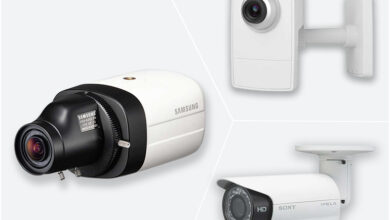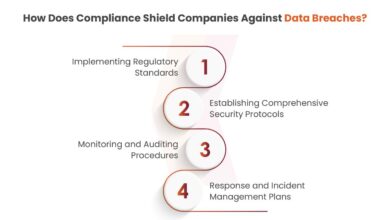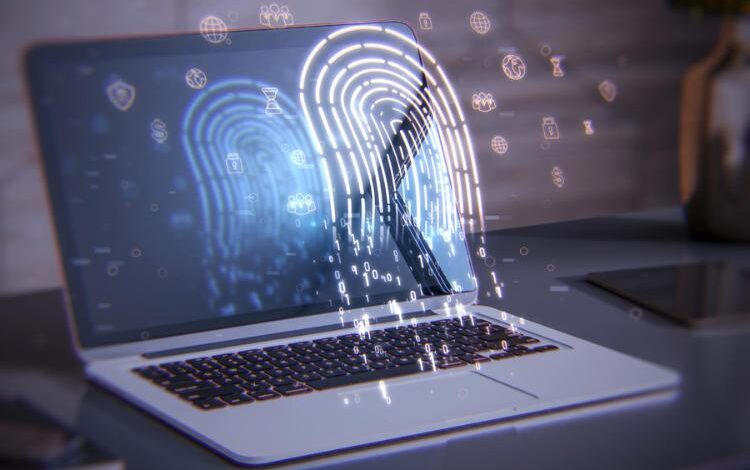
Can Biometric Monitoring Improve Data Center Cybersecurity?
Can biometric monitoring improve the cybersecurity posture of data centers? Absolutely! In today’s world of increasingly sophisticated cyber threats, traditional security measures like passwords and access cards are proving insufficient. Data centers, the beating heart of our digital world, are prime targets for malicious actors. This makes exploring advanced security solutions like biometric monitoring crucial. This post delves into how biometric authentication – using unique biological traits like fingerprints or iris scans – can bolster both physical and logical security within data centers, significantly enhancing their overall cybersecurity posture.
We’ll explore different biometric technologies, analyze their effectiveness against various threats (including insider threats!), and weigh the costs and benefits of implementation. We’ll also discuss the ethical and legal considerations, because responsible implementation is key. Get ready to dive into the fascinating world of biometrics and data center security!
Biometric Authentication in Data Centers
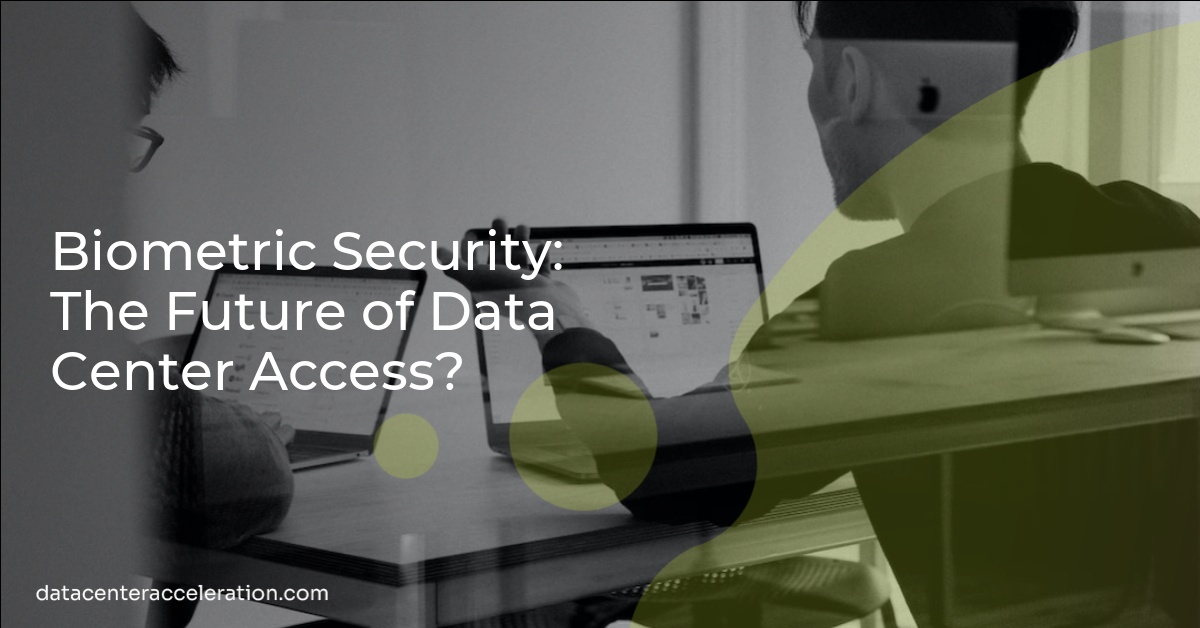
Data center security is paramount in today’s interconnected world. Protecting sensitive information and ensuring business continuity requires robust security measures. However, traditional security approaches, while offering a degree of protection, are increasingly vulnerable to sophisticated attacks. The sheer volume of data, coupled with the complexity of modern data center infrastructure, presents significant challenges.Traditional authentication methods, primarily relying on passwords and access cards, suffer from inherent limitations.
Passwords can be easily forgotten, stolen, or cracked through brute-force attacks. Access cards, while more secure than passwords, can be lost, stolen, or duplicated. Furthermore, managing access credentials for a large number of employees and contractors in a data center environment can be administratively burdensome and prone to human error. The need for a more secure and efficient authentication system is evident.Biometric authentication offers a compelling alternative.
It leverages unique biological characteristics to verify the identity of individuals attempting to access data center resources. This technology uses various methods to identify and authenticate users. Fingerprint scanning analyzes the unique patterns on a person’s fingertip. Iris scanning uses the unique patterns in the iris of an individual’s eye. Facial recognition technology compares a live image of a person’s face to a stored template.
Behavioral biometrics goes a step further, analyzing user typing patterns, mouse movements, and other behavioral characteristics to verify identity.
Comparison of Biometric Authentication Methods
The choice of biometric authentication method depends on several factors, including accuracy, security, cost, and ease of implementation. The following table provides a comparison of different methods:
| Method | Accuracy | Security | Cost | Ease of Implementation |
|---|---|---|---|---|
| Fingerprint | High (generally above 99%) | Moderate (susceptible to spoofing with high-quality fakes) | Low to Moderate | Moderate |
| Iris | Very High (generally above 99.9%) | High (difficult to spoof) | Moderate to High | Moderate to High |
| Facial Recognition | High (improving rapidly, but susceptible to spoofing with high-quality images or videos) | Moderate to High (depends on the sophistication of the system) | Moderate to High | Moderate |
| Behavioral Biometrics | Moderate to High (accuracy depends on the type of behavior and the sophistication of the system) | High (difficult to spoof, as it relies on learned behavior) | Moderate to High | Moderate to High |
Note that the accuracy, security, cost, and ease of implementation can vary depending on the specific technology used and the implementation details. For instance, the accuracy of facial recognition systems can be significantly affected by lighting conditions, image quality, and the presence of disguises. Similarly, the cost of implementation can vary depending on the scale of the data center and the chosen biometric system.
Sophisticated multi-factor authentication systems often combine biometric authentication with other methods, such as one-time passwords or hardware tokens, to further enhance security.
Enhancing Physical Security with Biometrics
Data centers house incredibly valuable assets, making robust physical security paramount. Biometric access control systems offer a significant upgrade over traditional methods, providing a more secure and efficient way to manage access to sensitive areas. By leveraging unique biological traits, these systems drastically reduce the risk of unauthorized entry and improve overall security posture.Biometric access control systems significantly improve physical security in data centers by offering a highly accurate and tamper-resistant method of verifying identity.
Unlike passwords or access cards, which can be lost, stolen, or guessed, biometric identifiers are inherently linked to the individual. This inherent link minimizes the risk of unauthorized access attempts, leading to a more secure environment.
Biometric System Implementation Examples
The implementation of biometric systems can take various forms, depending on the specific needs of the data center. For instance, fingerprint scanners can be placed at entry points to control access to server rooms or restricted zones. Facial recognition systems can be integrated with CCTV cameras to monitor activity and identify unauthorized individuals. Iris scanners, known for their high accuracy, can be used for high-security areas where the strictest access control is required.
Voice recognition technology could also play a role, potentially integrated with other systems to verify identity before granting access to critical systems. These examples demonstrate the versatility and adaptability of biometric technology to different security levels within a data center.
Integration with Existing Physical Security Infrastructure
Biometric systems are not meant to operate in isolation. Effective implementation involves seamless integration with existing security infrastructure, such as CCTV systems and alarm systems. For example, a biometric access control system can trigger an alarm if an unauthorized attempt is made. Simultaneously, the CCTV system can record the event, providing valuable evidence for investigations. Data from the biometric system can also be integrated into a centralized security management system, providing a comprehensive overview of all security events within the data center.
This integrated approach enhances situational awareness and allows for quicker and more effective responses to security threats.
Hypothetical Scenario: Thwarting a Physical Intrusion
Imagine a scenario where an intruder attempts to gain unauthorized access to a data center’s server room. The server room entry point is secured with a fingerprint scanner integrated with a CCTV system and an alarm system. The intruder tries to use a stolen access card, but the system immediately flags this attempt as unauthorized. The alarm is triggered, alerting security personnel.
Simultaneously, the CCTV system records the intruder’s actions. Furthermore, the intruder attempts to bypass the system by forcing the door, triggering another alarm. The biometric system logs this failed attempt and records the time of the intrusion attempt. The combination of these security measures, all working in concert, quickly alerts security personnel and gathers critical evidence, enabling a swift and effective response, preventing a potential data breach or equipment damage.
Strengthening Logical Security through Biometric Authentication
Biometric authentication, the use of unique biological traits for verification, offers a powerful way to bolster the logical security of data centers. By adding a layer of personal identification beyond traditional passwords and access cards, it significantly reduces the risk of unauthorized access and data breaches. This is particularly crucial in data centers, where sensitive information and critical infrastructure are constantly at risk.
Moving beyond physical security, the integration of biometrics into logical access controls creates a more robust and multi-layered defense system.
Multi-factor authentication (MFA) incorporating biometrics significantly enhances logical security by requiring users to provide multiple forms of evidence to prove their identity. For example, a data center employee might need to present their smart card (something they possess), enter a one-time code generated by an authenticator app (something they know), and then scan their fingerprint (something they are) before gaining access to specific systems or data.
Thinking about how biometric monitoring could boost data center security got me wondering about broader cloud security. The shift to cloud necessitates robust solutions, and that’s where understanding platforms like Bitglass becomes crucial; check out this article on bitglass and the rise of cloud security posture management for more insights. Ultimately, effective data center security, including biometrics, needs to integrate seamlessly with a comprehensive cloud security strategy.
This layered approach makes it exponentially more difficult for attackers to gain unauthorized access, even if they compromise one authentication factor.
Comparison of Biometric and Non-Biometric Authentication Combinations
The security level provided by different MFA combinations varies significantly. A simple username and password combination offers the lowest level of security, easily susceptible to phishing and brute-force attacks. Adding a one-time password (OTP) via an authenticator app improves security but remains vulnerable if the app is compromised. Incorporating a biometric factor, such as fingerprint or facial recognition, drastically increases security by adding a highly unique and difficult-to-replicate factor.
The strongest combination typically involves a strong password, an OTP, and a biometric scan, creating a multi-layered defense that is extremely resilient against common attack vectors. For instance, even if an attacker obtained the password and OTP, they would still be unable to access the system without the corresponding biometric trait.
Potential Vulnerabilities and Mitigation Strategies
While biometric authentication offers significant advantages, it’s not without vulnerabilities. Spoofing attacks, where an attacker attempts to replicate a biometric trait, represent a significant threat. For example, a high-quality fingerprint scan could be used to bypass a fingerprint reader. Furthermore, data breaches involving biometric templates stored in a database could compromise security. Mitigation strategies include using advanced biometric technologies that are resistant to spoofing (e.g., liveness detection for fingerprint scanners), implementing strong encryption and access controls for biometric data, and regularly updating and patching biometric authentication systems to address known vulnerabilities.
Regular security audits and penetration testing are also crucial to identify and address potential weaknesses before they can be exploited.
Best Practices for Implementing Biometric Authentication for Logical Access
Implementing biometric authentication for logical access requires careful planning and execution. Here are some best practices:
Effective implementation requires careful consideration of several key factors to maximize security and minimize risks. The choice of biometric modality should align with the sensitivity of the data and the level of security required. For instance, fingerprint scanning might be suitable for general access, while iris scanning might be preferred for access to highly sensitive data. Regular updates and maintenance of the biometric system are also crucial to address potential vulnerabilities and ensure optimal performance.
- Choose a robust and reliable biometric system from a reputable vendor.
- Implement strong encryption and access controls for stored biometric templates.
- Use multi-factor authentication, combining biometrics with other authentication factors.
- Employ liveness detection to prevent spoofing attacks.
- Regularly update and patch the biometric authentication system.
- Conduct regular security audits and penetration testing.
- Comply with relevant data privacy regulations and best practices.
- Provide comprehensive training to users on the proper use of the biometric system.
Biometric Monitoring for Insider Threats
Insider threats represent a significant risk to data center security, often surpassing the threat posed by external actors. Biometric monitoring offers a powerful tool to detect and deter these threats by continuously assessing employee behavior and access patterns, identifying anomalies that might indicate malicious intent or negligence. This technology goes beyond simple authentication and delves into behavioral analysis, providing a more comprehensive security layer.Biometric monitoring leverages various biometric modalities to enhance security.
This includes not only traditional methods like fingerprint or iris scans for access control, but also increasingly sophisticated behavioral biometrics. These systems analyze typing patterns, mouse movements, and even the way an individual interacts with specific applications to establish a baseline of “normal” behavior. Deviations from this baseline can trigger alerts, prompting further investigation.
Behavioral Biometrics and Suspicious Activity Identification
Behavioral biometrics offer a proactive approach to insider threat detection. By establishing a baseline of typical user behavior, the system can identify anomalies that may signal malicious activity. For instance, a sudden increase in data access outside of normal working hours, unusual file transfers to external accounts, or significantly altered typing patterns could trigger an alert. Consider a scenario where a system administrator, typically accessing only specific server logs, suddenly begins accessing sensitive customer data.
This deviation from their established baseline would be flagged as suspicious, prompting security personnel to investigate the unusual activity. Another example might involve a user’s mouse movements exhibiting a sudden change in speed and precision, potentially indicating they are under duress or are attempting to cover their tracks during a data exfiltration attempt. These subtle behavioral changes, often undetectable through traditional security measures, can be effectively identified using behavioral biometrics.
Ethical Considerations of Biometric Monitoring
The implementation of biometric monitoring for insider threat detection raises important ethical considerations. The constant monitoring of employee behavior can lead to concerns about privacy violations and the potential for misuse of sensitive biometric data. Transparency is paramount. Employees must be fully informed about the types of data collected, how it will be used, and the safeguards in place to protect their privacy.
Data minimization is also crucial; only the necessary biometric data should be collected and retained for the shortest possible time. Furthermore, clear guidelines and oversight mechanisms are necessary to prevent the discriminatory use of biometric data, ensuring fair and unbiased application of the monitoring system. A robust system of checks and balances, including regular audits and independent review, is vital to mitigate ethical risks.
Legal and Regulatory Implications of Biometric Monitoring, Can biometric monitoring improve the cybersecurity posture of data centers
Implementing biometric monitoring for insider threat detection involves navigating a complex landscape of legal and regulatory requirements. Data protection laws, such as GDPR in Europe and CCPA in California, impose strict rules on the collection, processing, and storage of biometric data. Compliance with these regulations is crucial, requiring organizations to obtain explicit consent from employees, implement robust security measures to protect the data, and provide individuals with the right to access, correct, or delete their biometric information.
Failure to comply with these regulations can result in significant fines and reputational damage. Furthermore, organizations must carefully consider potential legal challenges related to employee privacy rights and the potential for wrongful accusations based on misinterpreted biometric data. Legal counsel should be consulted to ensure compliance with all applicable laws and regulations.
Cost-Benefit Analysis and Implementation Challenges
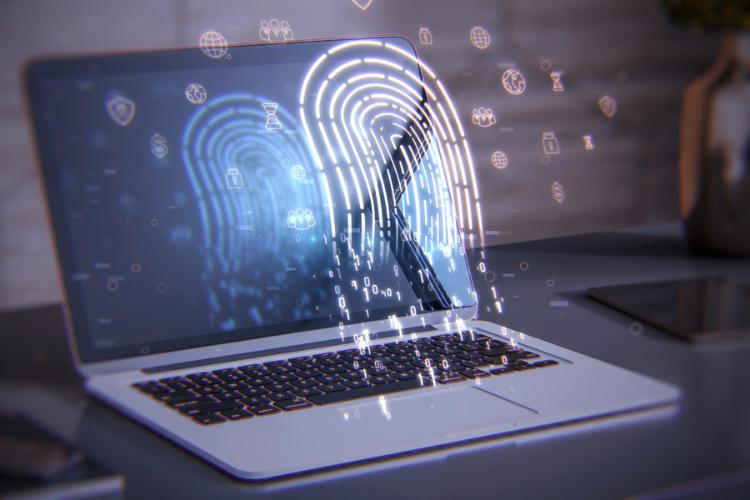
Implementing biometric monitoring systems in data centers presents a compelling proposition, promising enhanced security against both external and internal threats. However, the decision to adopt such a system requires a careful evaluation of the associated costs and benefits, as well as a thorough understanding of the potential implementation hurdles. This section delves into a cost-benefit analysis and explores the key challenges involved in deploying and maintaining biometric security within a data center environment.The initial investment in biometric monitoring can be substantial.
This includes the cost of hardware (biometric scanners, access control systems, servers for data storage and processing), software (authentication software, integration with existing security systems, data management tools), and professional services (installation, configuration, training, ongoing maintenance). Ongoing operational costs include licensing fees, system maintenance, and potentially the salaries of personnel dedicated to managing the system. These costs must be weighed against the potential benefits, which include reduced risk of data breaches, minimized downtime due to unauthorized access, improved compliance with industry regulations (like GDPR or HIPAA), and potentially lower insurance premiums.
A successful cost-benefit analysis should quantify both tangible and intangible benefits to determine a clear return on investment. For example, preventing a single major data breach could easily offset the initial investment and ongoing costs of a robust biometric system.
Cost-Benefit Analysis of Biometric Systems
A comprehensive cost-benefit analysis should consider both the direct and indirect costs and benefits. Direct costs include hardware, software, installation, and maintenance. Indirect costs include staff training and potential productivity losses during implementation. Benefits include reduced risk of data breaches, improved compliance, and potentially lower insurance premiums. For instance, a hypothetical data center with an annual budget of $10 million might allocate $500,000 for security upgrades.
A biometric system costing $200,000 might seem expensive initially, but if it prevents a single data breach costing $1 million or more, the investment quickly proves its worth. The analysis should also factor in the potential cost of not implementing the system, such as the financial and reputational damage from a successful security breach.
Technical Challenges in Biometric System Implementation
Implementing and maintaining biometric systems in data centers presents several technical challenges. Interoperability with existing security infrastructure is a major concern. The system must seamlessly integrate with access control systems, intrusion detection systems, and other security components. Scalability is another key challenge; the system should be able to handle a growing number of users and devices without compromising performance.
Data storage and security are also critical. Biometric data is highly sensitive and requires robust security measures to prevent unauthorized access and breaches. Maintaining the accuracy and reliability of the biometric system over time is also crucial. Factors like sensor degradation, environmental conditions, and user behavior can affect the system’s performance, necessitating regular maintenance and recalibration.
Furthermore, ensuring the system’s resilience against various attack vectors, including spoofing and replay attacks, is paramount.
Key Considerations for Successful Biometric System Deployment
Successful deployment requires careful planning and execution.
- Needs Assessment: Clearly define security requirements and objectives before selecting a system.
- System Selection: Choose a system that meets the specific needs of the data center, considering factors like scalability, accuracy, and interoperability.
- Integration Planning: Carefully plan the integration of the biometric system with existing security infrastructure to avoid conflicts and ensure seamless operation.
- User Training: Provide comprehensive training to users on how to use the biometric system effectively and securely.
- Ongoing Maintenance: Establish a regular maintenance schedule to ensure the system’s accuracy, reliability, and security.
- Compliance: Ensure the system complies with all relevant regulations and industry best practices regarding data privacy and security.
Addressing Privacy and Data Protection Concerns
Concerns regarding privacy and data protection are paramount. Biometric data is highly sensitive and must be handled with the utmost care. Robust security measures, including encryption both in transit and at rest, are essential. Access to biometric data should be strictly controlled and limited to authorized personnel only. Data minimization principles should be applied, storing only the necessary biometric data.
Regular security audits and vulnerability assessments are crucial to identify and address potential weaknesses. Transparency and user consent are also key. Users should be informed about how their biometric data will be collected, used, and protected. Compliance with relevant data protection regulations, such as GDPR and CCPA, is mandatory. Implementing strong access control mechanisms and employing techniques like data anonymization or tokenization can further mitigate privacy risks.
Regular audits and independent assessments can ensure adherence to privacy regulations and best practices.
Future Trends and Developments: Can Biometric Monitoring Improve The Cybersecurity Posture Of Data Centers
The integration of biometrics into data center security is rapidly evolving, driven by advancements in technology and the ever-increasing sophistication of cyber threats. We’re moving beyond simple fingerprint scanners to a future where multiple biometric modalities and AI-powered analysis will create a significantly more robust and adaptive security system. This shift promises to not only enhance physical access control but also strengthen logical security and bolster defenses against insider threats.The next generation of data center security will leverage a multifaceted approach, combining the strengths of various biometric technologies and integrating them seamlessly with existing security infrastructure.
This integration will be crucial in creating a holistic security posture that proactively mitigates emerging threats.
Emerging Biometric Technologies and Applications
Several emerging biometric technologies are poised to revolutionize data center security. Behavioral biometrics, which analyze typing patterns, mouse movements, and other user behaviors, offer a passive and continuous authentication method, detecting anomalies indicative of unauthorized access. This complements traditional biometric methods like fingerprint and iris scanning, providing an additional layer of security. Furthermore, advancements in vein recognition technology, offering higher accuracy and resistance to spoofing, are becoming more cost-effective and widely applicable.
Imagine a system that verifies identity not just through a fingerprint scan at the entrance, but also continuously monitors user behavior at their workstation, flagging suspicious activity in real-time. This continuous monitoring significantly enhances the overall security posture.
Artificial Intelligence and Machine Learning Enhancements
AI and machine learning are instrumental in improving the accuracy and effectiveness of biometric systems. AI algorithms can analyze large datasets of biometric data to identify patterns and anomalies, improving the accuracy of authentication and detection of spoofing attempts. For instance, AI can learn to differentiate between legitimate and fraudulent fingerprint scans by analyzing subtle variations in pressure, speed, and angle of the scan.
Machine learning models can be trained to adapt to changes in user behavior, reducing false positives and improving the overall user experience. This adaptive learning is critical in a dynamic environment where user behavior may change over time. A system trained to recognize a user’s typical typing speed could flag unusual slowdowns, potentially indicating a compromised account.
Thinking about beefing up data center security? Biometric monitoring is a hot topic, offering a strong layer of authentication. But managing all that data efficiently requires smart solutions, which is where exploring the innovative world of domino app dev the low code and pro code future comes in. These platforms can help streamline the integration and management of biometric systems, ultimately enhancing the overall security posture of your data center.
It’s all about finding the right tools for a robust defense.
Biometric Monitoring Integration with Other Security Technologies
The true potential of biometric monitoring lies in its integration with other security technologies. Combining biometric data with threat intelligence platforms allows for a more comprehensive understanding of potential threats. For example, if a biometric system detects unusual access attempts from a known compromised account, the threat intelligence platform can provide context, such as the source IP address and potential malware associated with the attack.
This integration facilitates proactive threat response and enables security teams to swiftly mitigate potential breaches. The synergistic effect of combining biometric authentication with intrusion detection systems and network security monitoring tools creates a layered security approach that is far more effective than any single technology in isolation. Think of it as a comprehensive security ecosystem where all parts work together to defend against threats.
Addressing Future Cybersecurity Threats with Biometric Monitoring
Biometric monitoring is not a static solution; it needs to evolve to address the ever-changing landscape of cybersecurity threats. Future developments will focus on enhancing the resilience of biometric systems against advanced attacks such as deepfakes and AI-powered spoofing techniques. This will require the development of more sophisticated algorithms and the use of multiple biometric modalities to create a more robust and resilient authentication system.
Furthermore, the increasing adoption of quantum computing necessitates the development of quantum-resistant biometric authentication methods to safeguard against potential future attacks that exploit the capabilities of quantum computers. The proactive development and implementation of these advanced technologies are essential to maintain a high level of security in the face of increasingly sophisticated threats.
Final Summary
Biometric monitoring offers a powerful layer of security for data centers, addressing vulnerabilities left open by traditional methods. While implementation challenges and ethical considerations exist, the potential benefits in preventing unauthorized access and detecting insider threats are undeniable. As technology advances, we can expect even more sophisticated and integrated biometric solutions to emerge, further solidifying data center security in the years to come.
It’s not just about the tech; it’s about a holistic approach to security that leverages the best tools available to protect our vital digital infrastructure.
Clarifying Questions
What are the biggest privacy concerns with biometric data?
The biggest concerns revolve around data breaches and unauthorized access to sensitive biometric information. Robust encryption, secure storage, and strict access control protocols are crucial to mitigate these risks.
How accurate are biometric systems in real-world scenarios?
Accuracy varies depending on the technology used and environmental factors. While generally high, false positives and negatives can occur. It’s important to choose a system with a high accuracy rate and implement appropriate error handling procedures.
What happens if a biometric system fails?
Robust fallback mechanisms are essential. This might involve secondary authentication methods or manual override procedures to ensure uninterrupted access in case of system failure.
Are biometric systems expensive to implement?
The cost varies significantly based on the scale of deployment and the chosen technology. While initial investment can be substantial, the long-term benefits in terms of reduced security breaches often outweigh the costs.
